What is Lidocaine?: The Secret To A Nearly Pain-Free Tattoo Numbing Cream
What is Lidocaine?: The Secret To A Nearly Pain-Free Tattoo Numbing Cream
If you’ve ever paid a visit to the dentist or dermatologist for a procedure involving needles, lidocaine was probably used as a numbing agent to reduce (or eliminate) the pain. Lidocaine is a type of local anaesthetic, which blocks signals from nerve endings and dulls sensation on a portion of the skin. Unlike general anesthesia, local anaesthetics do not cause you to lose consciousness. Local anaesthetics are only used for minimally invasive medical or cosmetic treatments where the patient or client is awake. Lidocaine can be injected or applied topically - depending on the type of procedure and area being treated. Topical numbing creams, like Zensa Numbing Cream, contain lidocaine as the active ingredient to numb the skin for procedures including tattoos, permanent makeup (microblading, lip blushing, etc.), certain cosmetic treatments (waxing, microneedling, Botox, fillers and other injectables) and piercings. Lidocaine is also available in gel, ointment, spray and patch formulas that can be applied on the skin to relieve causes of burning or itchy skin, sore throat or mouth, urethra inflammation and nerve pain.
Expert Tip: Zensa Numbing Cream contains 5% lidocaine for painful procedures like tattooing, permanent makeup treatments, microneedling, waxing, fillers and piercings. To maximize its numbing effects, make sure to occlude the topical anaesthetic immediately after its application. Use Saran Wrap (such as Press ‘n Seal) to increase the product’s absorption rate by 300-500%.
Check here to see how to use tattoo numbing cream for every procedure and how long to leave on Zensa Numbing Cream to give the lidocaine enough time to activate with each one.
Here’s everything to know about lidocaine, why it’s the most popular active ingredient for numbing creams and cosmetic injectables, how long its effects last, uses, side effects and common myths, among other facts (and misconceptions) about lidocaine – debunked by Aly Lalani, Zensa’s in-house expert on all things topical anaesthetics.
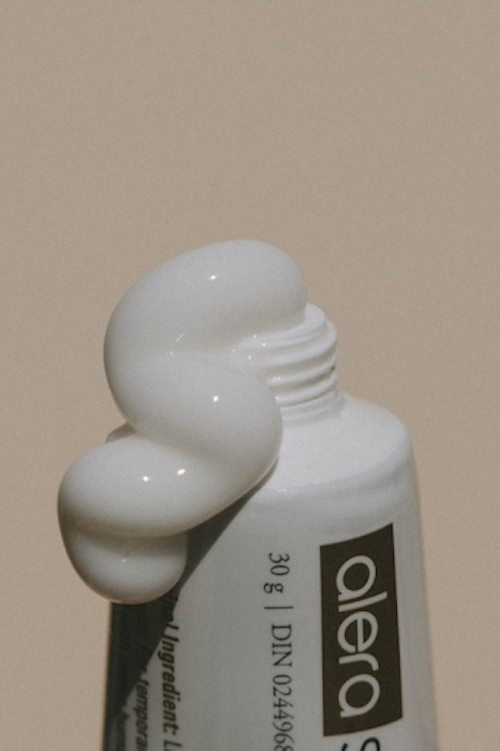
What is Lidocaine?
Lidocaine is classified as a type of local anaesthetic. It works by blocking the transmission of nerve signals when injected or applied topically to the skin. Lidocaine causes a loss of feeling in this localized area to prevent or relieve pain from medical or cosmetic procedures, nerve-related body aches and certain skin conditions.
Lidocaine is a common active ingredient found in topical treatments used to control nerve pain (lidocaine patches), alleviate burning, itching or general discomfort from sunburns, other minor burns, eczema, insect bites, rashes, scrapes and similar skin concerns (Xylocaine jelly or ointments) and in (topical or) tattoo numbing creams, including Zensa Numbing Cream.
It is also a popular numbing agent found in injectables for dental procedures (Xylocaine) and certain cosmetic injectables (dermal fillers like Juvederm® and Restylane ®).
What is Lidocaine Used For?
Lidocaine For Topical Use (Tattoo Numbing Cream, Xylocaine Jelly or Ointment, Patches):
- Tattoos
- Microblading
- Lip Blushing
- Waxing
- Microneedling
- Botox
- Dermal Fillers (Face & Lip Fillers)
- Sunburns
- Eczema
- Rashes or Itchy Skin
- Minor Burns or Scrapes
- Nerve Pain (Shingles)
- Sore Throat or Mouth
- Sexual Dysfunction
- Hemorrhoids
- Insect Bites, Poison Ivy & Similar Allergic Reactions
Lidocaine For Injectable Use:
- Dental Procedures
- Nerve Pain (Back or Spinal Pain, Neck Pain, Pelvic Pain, Shoulder Pain, etc.)
- Cosmetic Injectables (Dermal fillers like Juvederm® and Restylane® and 1% lidocaine can be used to dilute Botox injections)
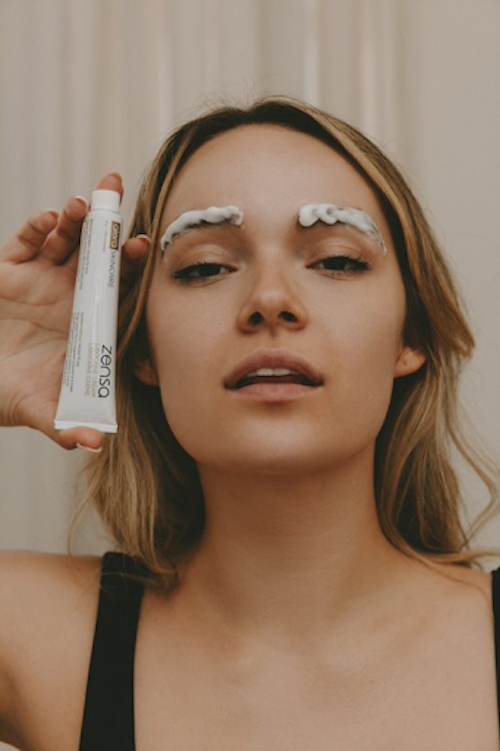
How Long Does Lidocaine Last?
The numbing effects from most lidocaine treatments (topical creams or injections) last for between 1-3 hours before wearing off. How long the numbing effects of a lidocaine-based numbing cream (and other topical formulas) last depends on the product’s potency (OTC topical creams contain between 2-5% lidocaine), time left on the skin to activate and the lidocaine’s absorption rate into the skin.
Zensa Numbing Cream contains 5% lidocaine for maximum strength numbing effects to prevent and reduce pain for tattoos, permanent makeup procedures (microblading, lip blushing, etc.), cosmetic treatments (waxing, microneedling, botox and dermal fillers) and piercings. The vegan, steroid-free formula lasts for 2-3 hours once the lidocaine activates and can be safely reapplied on broken skin to extend the numbing sensation (see for the allotted times needed to leave the topical anaesthetic on before beginning each type of procedure).
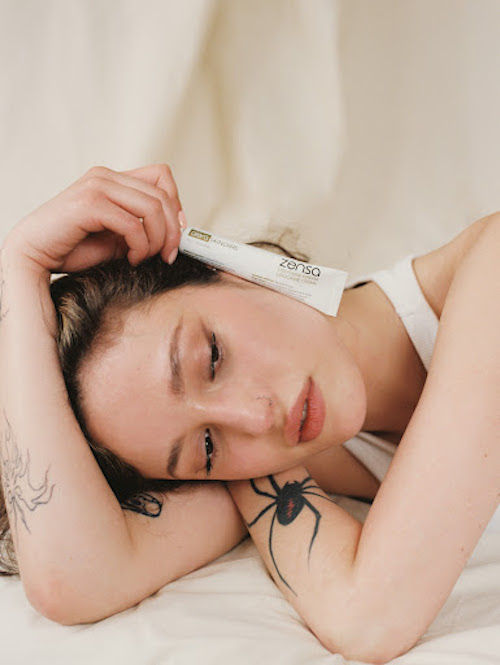
Zensa Numbing Cream for Tattoos:
Vasoconstrictors are one of the main reasons tattoo artists (and clients) are hesitant to use a tattoo numbing cream because they can cause the ink to settle oddly into the skin. However, unlike most tattoo numbing creams on the market, Zensa Numbing Cream’s unique formula does not contain any vasoconstrictors, so it will not affect ink settling. Zensa Numbing Cream earns tattoo artists’ stamp of approval because it provides clients with the opportunity to mitigate any pain without worrying about altering the final look of their piece. Zensa Numbing Cream also contains vitamin E, which offers anti-inflammatory benefits to support the healing process from start to finish.
Ensure that you arrive at your tattoo appointment with freshly cleaned and exfoliated skin to maximize the lidocaine’s ability to penetrate the skin. “Because the epidermis (the top layer of the skin) is the toughest layer for a topical cream to absorb through, removing its outer layer through exfoliation greatly enhances its absorption capability,” explained Aly Lalani, Zensa’s in-house topical anaesthetics expert. Follow your artist’s instructions regarding whether you should shave the area before arriving at your tattoo session. Often, your tattoo artist will shave the skin if they find it necessary or know that you’re not comfortable shaving the area on your own.
Prior to stenciling, apply a half-inch thick layer of Zensa Numbing Cream. It’s important that you don’t rub the cream into the skin. Cover it immediately with saran wrap (such as Press’n Seal) to increase its absorption rate, and allow it to sit for 30-45 minutes. Then, remove the wrapping and use a sterile piece of gauze to gently dab away (do not wipe) any excess numbing cream right before stenciling your tattoo.
Always speak with your artist before using topical anaesthetics for any tattoo appointment.
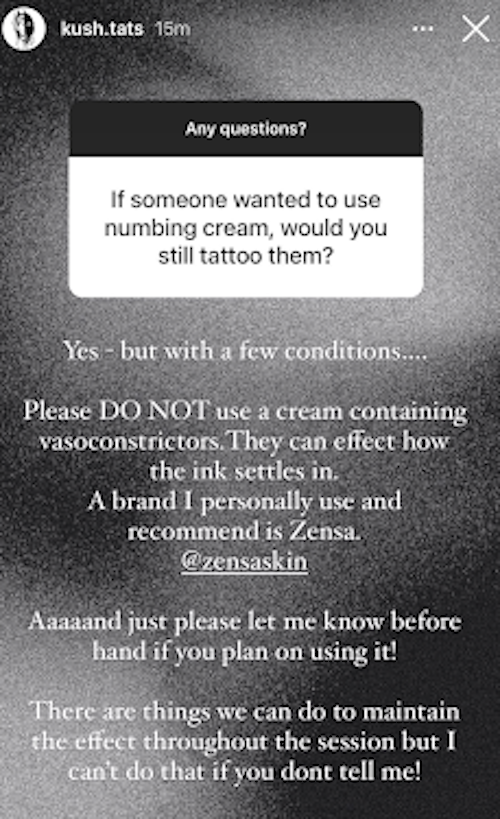
Zensa Numbing Cream for Permanent Makeup:
While microblading and lip blushing (and similar PMU procedures) use semi-permanent ink, they can still hurt as much as a traditional tattoo – especially without numbing cream.
Using a lidocaine-based numbing cream should make the microblading process virtually pain-free. The microblading procedure itself takes around 30-60 minutes to complete (after brow mapping and allotting time for the numbing cream to activate). While performing the procedure, your PMU should gently dab the topical anaesthetic off of one brow at a time to maximize the lidocaine’s numbing effect during your microblading treatment.
The lips are highly sensitive so you might still feel some pain (often described as a light scratching sensation) even with a properly-applied topical anaesthetic. Zensa Numbing Cream contains a natural pH formula – making it suitable for more sensitive areas like the lips.
Apply a half-inch thick layer of Zensa Numbing Cream 15-20 (or up to 25) minutes before any permanent makeup treatment of your choice. Again, it is important not to rub the layer of cream into the skin. Cover the numbing cream-coated skin with saran wrap (such as Press n’ Seal). The product should be gently dabbed away immediately before the treatment begins.
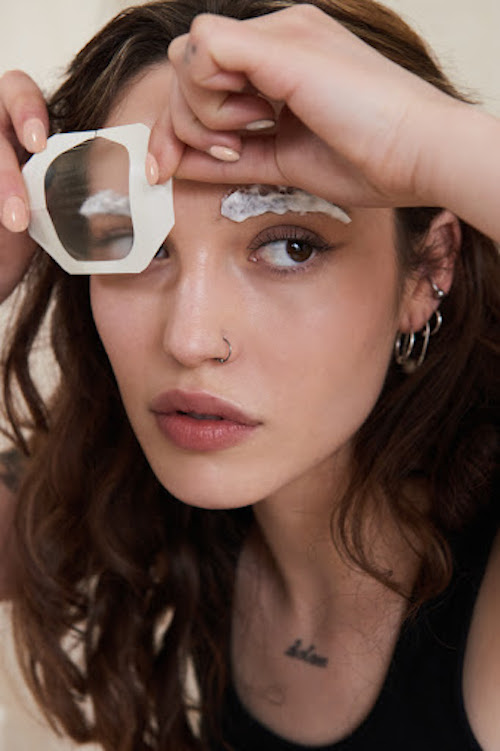
Zensa Numbing Cream for Waxing:
Lidocaine-based numbing creams can be extremely beneficial for waxing to reduce any pain (and anxiety) associated with this hair removal treatment. Zensa Numbing Cream’s natural pH formula makes it safe to use on sensitive areas (like the bikini line) and should be an essential product to include in your preparation tool kit for a nearly pain-free bikini or Brazilian wax. Exfoliate the skin 24-48 hours before your waxing session. Take a shower the same day of your appointment to ensure the skin is as clean as possible beforehand. Properly washing and exfoliating the area is essential to maximizing the numbing cream’s absorption rate for waxing.
However, you want to be cautious not to keep the numbing cream on for too long as the numbing sensation can dull your ability to feel whether the wax is too hot. So, watch the clock after applying the topical anaesthetic to ensure you don’t burn your skin.
Apply the numbing cream 20-30 minutes before waxing (or 15 minutes prior to brazilian, underarm and upper lip waxing). Cover the area with saran wrap (such as Press’n Seal) for greater absorption into the skin. Remove the wrap and gently dab the cream away immediately before beginning the procedure.
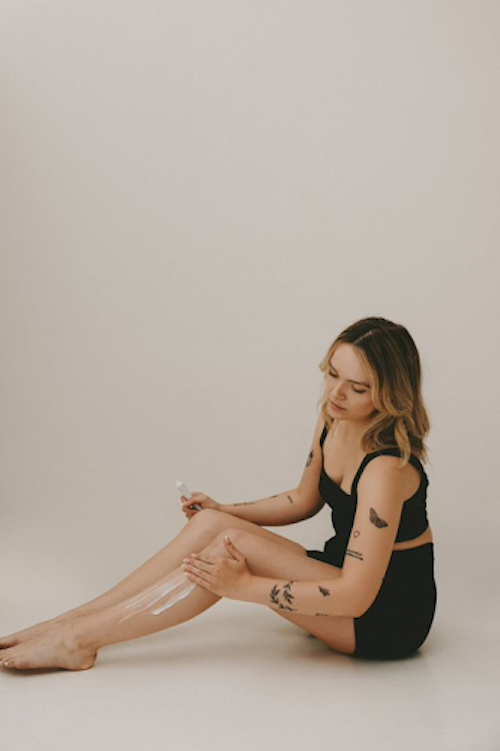
Zensa Numbing Cream for Botox & Fillers:
Using a numbing cream gives you peace of mind if you’re afraid that getting botox or fillers will hurt. While certain dermal fillers (like Juvederm® and Restylane ®) already contain some lidocaine, applying a topical anaesthetic before any cosmetic injectables provides a virtually pain-free botox or filler treatment experience. Products like Zensa Numbing Cream are suitable for sensitive areas like the lips to minimize the pain from lips fillers, face fillers and botox procedures (decreasing the intensity of any mild burning, stinging or scratching sensations).
Ensure to clean the skin thoroughly with an alcohol swab before your session to maximize the numbing cream’s absorption capabilities. Arrive at your appointment 30 minutes early to allow your provider to apply the topical anaesthetic and give the lidocaine time to activate. Apply a half-inch thick layer of the numbing cream to the area, and do not rub it into the skin. Wait approximately 10-15 minutes before wiping away the numbing cream and injecting the skin.
Always speak with your licensed professional before using topical anaesthetics for any cosmetic treatments.

Zensa Numbing Cream for Piercings:
Be cautious when deciding on which numbing cream to use for piercings. Topical anaesthetics with vasoconstrictors can temporarily alter the skin texture and lead to crooked piercings. However, Zensa Numbing Cream does not contain any vasoconstrictors, which would briefly thin your skin texture, and offers 5% lidocaine for maximum strength pain prevention. Apply the numbing cream to the piercing site, and leave it on for around 10-15 minutes. You should begin to feel the numbing sensation around 5 minutes after the product’s application. Zensa Numbing Cream is ideal for piercings because of its natural pH formula (designed for sensitive areas) and vitamin E concentration. Vitamin E offers anti-inflammatory benefits, which help aid the swelling that’s inevitable when getting an ear piercing or other piercings on the face or body.
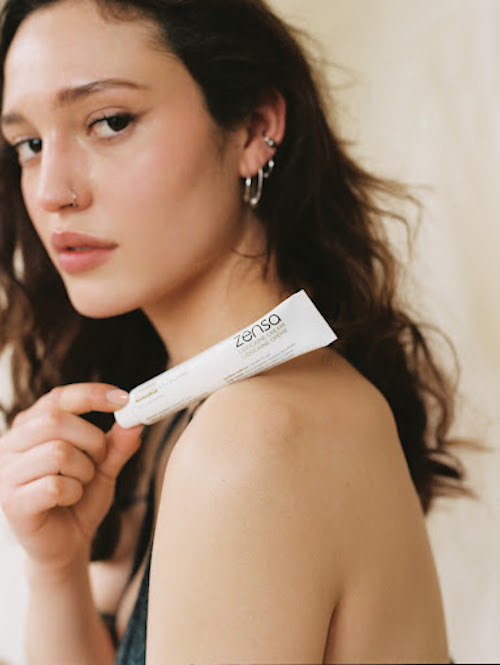
Learn more about why lidocaine is the most popular active ingredient for tattoo numbing creams and how to use it for every procedure.
Common Numbing Cream Myths (Debunked)
While lidocaine is a popular topical anaesthetic, there are still many misconceptions surrounding numbing creams, how to use them and their efficacy. We sat down with our in-house expert, Aly Lalani, to discuss and debunk common numbing cream myths. Here are some key highlights from the interview, which offer some insight on how to use lidocaine-based topical anaesthetics and why it is the best active ingredient option to look for in a tattoo numbing cream.
Common Myth: High caines equal better numbing results.
Expert-Approved Truth: Maximum strength often comes in moderation. Products with higher caine percentages tend to increase your risk of health problems (issues with skin inflammation, redness, swelling and trouble breathing) with little to no reward. Any products made with lower caine percentages (1-3% lidocaine) require you to apply more product and leave it on for longer to ensure the numbing sensation takes effect. Zensa Numbing Cream contains 5% lidocaine (the upper legal limit approved by the FDA and Health Canada) for maximum strength numbing effects without undesirable health risks.
Common Myth: There’s a decent chance you have a lidocaine allergy.
Expert-Approved Truth: Lidocaine allergies are extremely rare. In most cases, an adverse reaction to a lidocaine-based numbing cream results from an allergy to one of the filler ingredients. “93% of filler ingredients are potentially allergenic.There's always at least one filler ingredient in every topical anaesthetic that someone could be allergic to,” Lalani explained. “The more ingredients in a product, the more likely someone will be allergic to it.” Do a patch test with the numbing cream as a precaution to avoid any adverse reaction.
Common Myth: Every topical anaesthetic should be applied the same way.
Expert-Approved Truth: Different formulas require different preparation and application methods. Some topical anaesthetics – gel, cream, ointment, etc. – work more effectively when refrigerated while others absorb better when kept at room temperature. Unlike oil-based options, water-based topical anesthetics, like Zensa Numbing Cream have significantly higher absorption rates (increases by 300-500%) when covered while the lidocaine activates.
Common Myth: Lidocaine, tetracaine, prilocaine, and benzocaine can work interchangeably.
Expert-Approved Truth: While they all have numbing capabilities, every caine type has a certain level of numbing strength, speed of numbing and potential toxicity. Lalani shares why lidocaine is the best option on all counts: “Lidocaine is the most widely used caine because of its strong numbing properties, it works the quickest and is the least toxic out of all of them.”
Common Myth: Artists advise against using a numbing cream for tattoos.
Expert-Approved Truth: The formula you choose matters. Many artists shy away from recommending the use of a tattoo numbing cream because of vasoconstrictors, which can alter how the ink settles and compromise the appearance of your tattoo. Zensa Numbing Cream does not contain vasoconstrictors, so it allows you to reduce short-term pain without ruining the final look of your piece.
Common Myth: Hygiene doesn’t affect topical anaesthetic absorbency.
Expert-Approved Truth: Washing and exfoliating the skin is essential for the topical anaesthetic to absorb properly. “Because the epidermis (the top layer of the skin) is the toughest layer for a topical cream to absorb through, removing its outer layer through exfoliation greatly enhances its absorption capability,” Lalani explained.
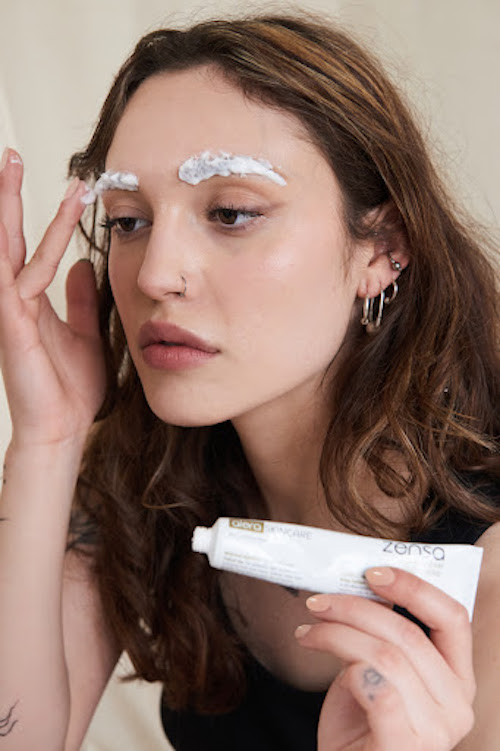
Lidocaine Side Effects
While these symptoms are extremely rare (especially non-topical side effects), it is important to pay attention if something feels off after applying a lidocaine-based numbing cream, ointment, gel, patch or receiving a lidocaine injection.
More mild side effects include:
- Cold or Numb Feeling
- Feeling of Heat
- Nervousness
- Generally False or Unusual Sense of Well-Being
Seek medical attention immediately if you notice any of the symptoms below:
- Dry, Cracked or Scaly Skin
- Blistered Skin
- Redness, Itchiness or Skin Irritation
- Skin Swelling, Hives or Welts (Particularly On The Eyelids, Face, Lips, Tongue, Throat, Hands, or Feet)
- Burning or Discoloration At The Application Site
- Pale/Blue Skin, Lips or Nails
- Cold & Clammy Skin
- Puffy Eyelids, Face, Lips or Tongue
- Abnormal Bleeding or Bruising
- Shallow or Difficulty Breathing
- Sore Throat
- Headache
- Drowsiness or Dizziness
- Twitching, Trembling or Shaking of The Hands/Feet
- Unusual Tiredness or Weakness
- Rapid or Slowed Heart Rate
- Fever or Chills
- Chest Tightness, Pain or Discomfort
- Dark Urine
- Cough
- Hearing Loss
- Confusion
- Ringing in The Ears
- Irregular Heartbeat
- Vomiting
- Seizures
- Loss of Consciousness

Everything To Know About Zensa Numbing Cream
Zensa Numbing Cream contains 5% lidocaine to offer a maximum-strength barrier for painful procedures like tattooing, permanent makeup treatments, microneedling, waxing, fillers and piercings. Our formula is vegan, steroid-free and has a natural pH formula that makes it suitable for sensitive areas like the lips and bikini area. Zensa Numbing Cream lasts for 2-3 hours on the skin and can be reapplied (even on broken skin) to extend the numbing sensation. It does not have any vasoconstrictors that impede ink setting and contains vitamin E to provide anti-inflammatory benefits to support the skin barrier and wound-healing process.
How To Apply Zensa Numbing Cream
- Exfoliate, and shower or clean the area with an alcohol swab
- Apply a half-inch thick layer of numbing cream (don’t rub it into the skin)
- Cover the area with Saran Wrap (such as Press’n Seal) to promote absorption into the skin
- Leave the numbing cream on for the allotted time needed (Tattoos & Hair Removal: 30-45 minutes, Permanent Makeup: 15-25 minutes, Injections: 10 minutes, Piercings: 10-15 minutes)
- Remove the wrap and gently dab away the excess numbing cream before beginning the procedure
Learn more about Zensa Numbing Cream and the world of topical anaesthetics. Here’s everything you should know about our unique formula.
